I just built a lap steel guitar using wood from B&Q and guitar bits (P90, LP junior bridge etc) I had lying around. Got the basic design online, and tweaked it to put the volume pot (the only pot) on top within pinky-reach of the RH playing position - for pedal steel type swells etc. The plank itself works great, although I could do the pinky swells better with a volume pot that went from quiet to loud with less turn or travel, if that makes any sense...
Does such a pot exist?
This is my first and only build project btw - I have no electronic, woodworking or luthiery(word?) skills, and I'm kind of astounded it actually works. The whole shebang cost £7, plus a tenner for the heavyweight tone bar (essential) off eBay. It's tuned old-school C6 for that Hank thang.
Happy to post pics if anyone's remotely interested (like, if I can make one, ANY of you guys could) altho it's cosmetically uh...underdeveloped as yet.
Appreciate any advice on the pot thing, thanks.
short travel volume pot question
Moderated By: mods
Wanna see pix!
The smaller the knob you use on a pot, the farther it'll sweep with a given amount of twist. Of course, a smaller knob gives you less leverage against the pot's internal friction so it's harder to twist. But that may be one option.
Or you could use one half of a stereo blend pot, the kind that's two stacked pots with both sides "full on" when the knob's in the center of its sweep. Each pot takes a half-sweep to go from zero to full.
There may be a way to use a resistor in parallel with an audio-taper pot, but I'm not sure how you'd arrange that to get the best results. Try one half of a stereo pot with a smallish knob.
The smaller the knob you use on a pot, the farther it'll sweep with a given amount of twist. Of course, a smaller knob gives you less leverage against the pot's internal friction so it's harder to twist. But that may be one option.
Or you could use one half of a stereo blend pot, the kind that's two stacked pots with both sides "full on" when the knob's in the center of its sweep. Each pot takes a half-sweep to go from zero to full.
There may be a way to use a resistor in parallel with an audio-taper pot, but I'm not sure how you'd arrange that to get the best results. Try one half of a stereo pot with a smallish knob.
Also whether the pot is Linear or audio taper (Logarithmic) pots - if you want maximum swell with minimum pot travel then a Logarithmic might suit better according to AxesRUs:
"Logarithmic vs Linear
Linear pots are generally used for volume control, and Logarithmic are used for Tone.
The reaon for this is that Linear pots give a true representation of the output, (so 1 on the dial is 10% of the output, 5 is 50% and 10 is 100%). This means their a good all purpose pot, that can be used on both tone and volume.
Logarithmic pots (or Audio Taper) are a little bit more complicated. They offer very little control from 1 - 5 (jumping for 0% to 60 or 70% very quickly. Anyone whos played a fender hotrod will know exactly what thats like, as you reach percieved maximum volume at about 4 on the dial). As a tone pot their quite handy when you consider that, from 5 to 10, your covering less ground, giving you much more control over your sound[/b]. Considering very few of us roll the tone down past 5, the trusty Logarithmic pot still has its uses when fine tuning your sound."
Not fully looked into this yet but more Pot guff can be found here.
"Logarithmic vs Linear
Linear pots are generally used for volume control, and Logarithmic are used for Tone.
The reaon for this is that Linear pots give a true representation of the output, (so 1 on the dial is 10% of the output, 5 is 50% and 10 is 100%). This means their a good all purpose pot, that can be used on both tone and volume.
Logarithmic pots (or Audio Taper) are a little bit more complicated. They offer very little control from 1 - 5 (jumping for 0% to 60 or 70% very quickly. Anyone whos played a fender hotrod will know exactly what thats like, as you reach percieved maximum volume at about 4 on the dial). As a tone pot their quite handy when you consider that, from 5 to 10, your covering less ground, giving you much more control over your sound[/b]. Considering very few of us roll the tone down past 5, the trusty Logarithmic pot still has its uses when fine tuning your sound."
Not fully looked into this yet but more Pot guff can be found here.
iCEByTes wrote:5 Most Jizz face maker Solo�s , classic Rock music i ever listened.
iCEByTes wrote:Blunt a joint , Take the Touch , Listen this.
the human ear isn't linear though.Black Cat Bone wrote:The reaon for this is that Linear pots give a true representation of the output, (so 1 on the dial is 10% of the output, 5 is 50% and 10 is 100%). This means their a good all purpose pot, that can be used on both tone and volume.
50% actual volume isn't going to sound like 50% to you. this is why log pots are used alot for audio stuff. they sound like they're going smoothly from 0 - 10 because our ears respond to sound pressure logarithmically.
Happy new year everyone.
Took a while but here's pics of the plank steel. Like I said, cosmetically underwhelming, but it plays just dandy. It's a budget shelf from B&Q sawn in half and stuck together to save on things like routing and headstock chiselling.
Note the temporary "fretboard" drawn on with non-permanent marker (then smudged when my daughter spilled milk on it) which I'll cover with a bit of darker wood with properer fret markers on when I get a minute.
If anyone wants to know how to build it, let me know.
All the best...
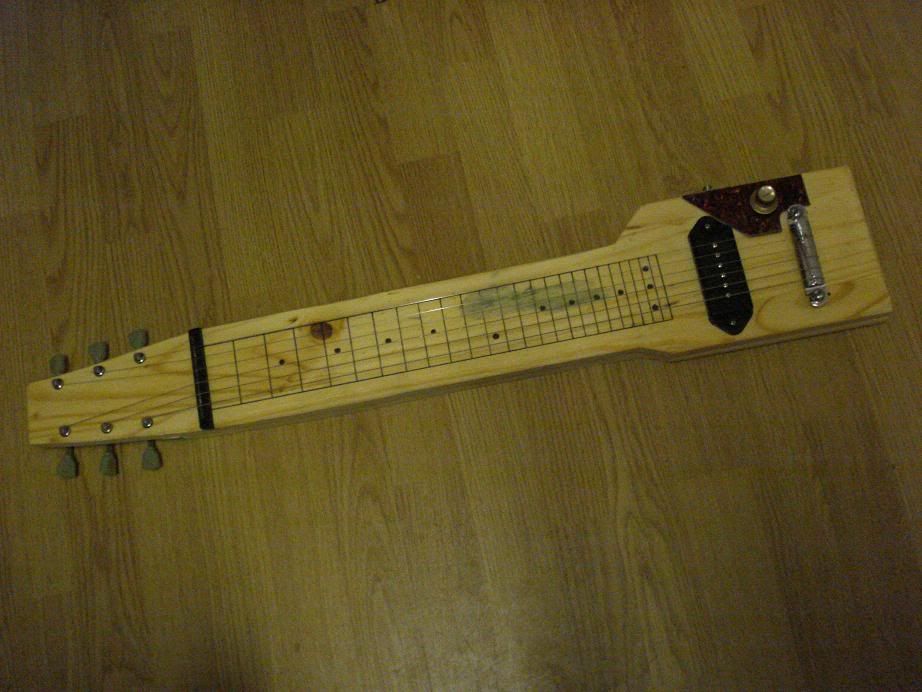
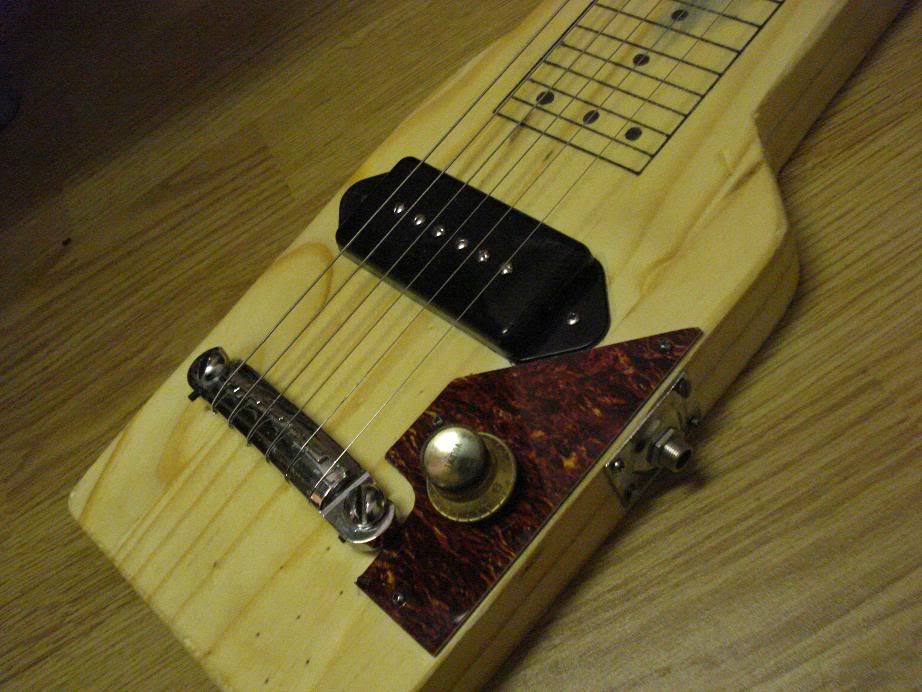
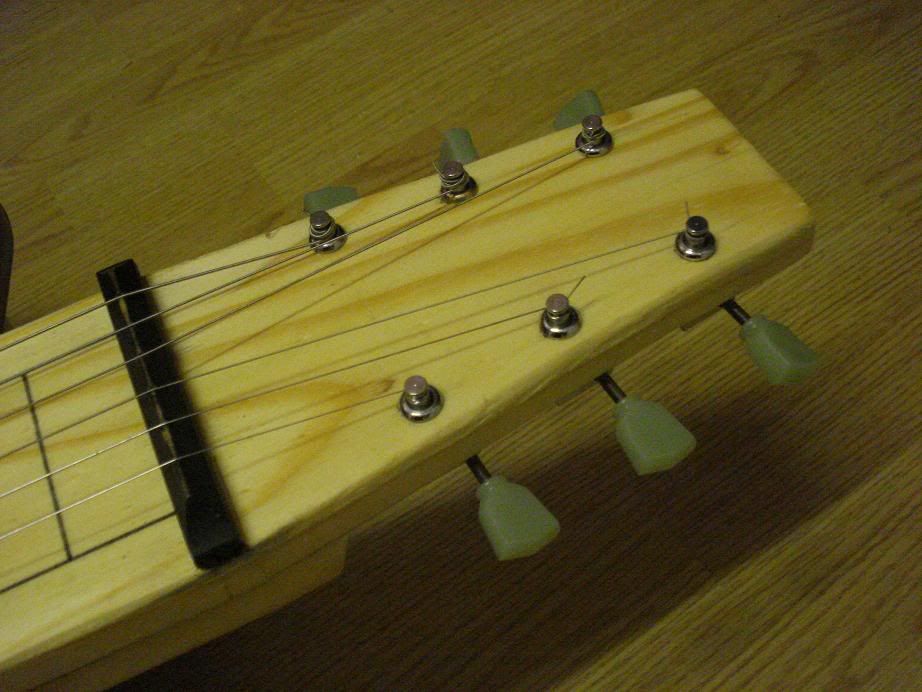
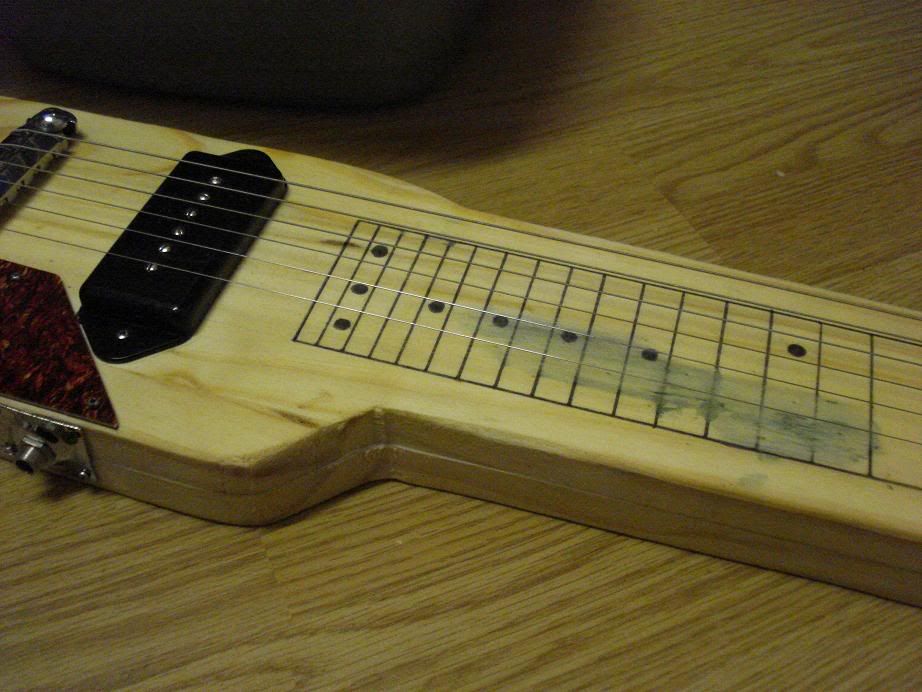
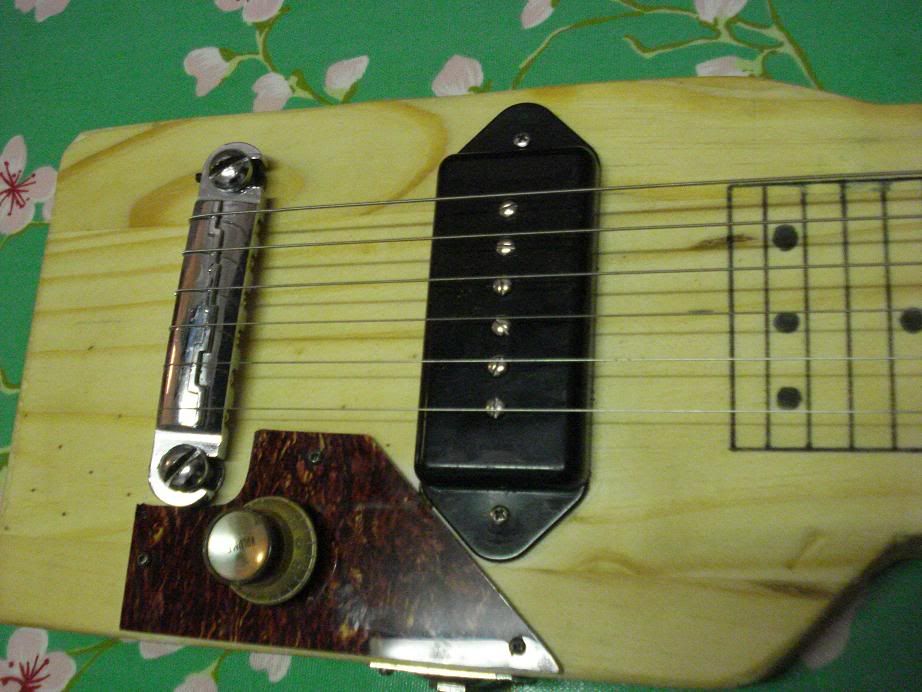
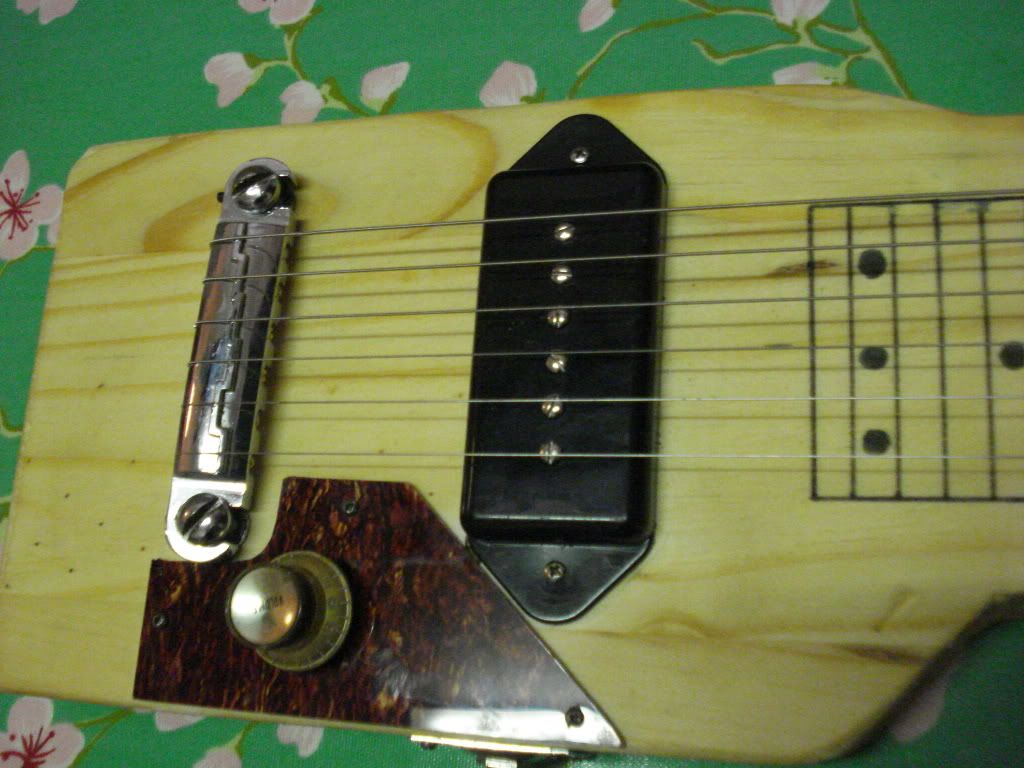
Took a while but here's pics of the plank steel. Like I said, cosmetically underwhelming, but it plays just dandy. It's a budget shelf from B&Q sawn in half and stuck together to save on things like routing and headstock chiselling.
Note the temporary "fretboard" drawn on with non-permanent marker (then smudged when my daughter spilled milk on it) which I'll cover with a bit of darker wood with properer fret markers on when I get a minute.
If anyone wants to know how to build it, let me know.
All the best...








